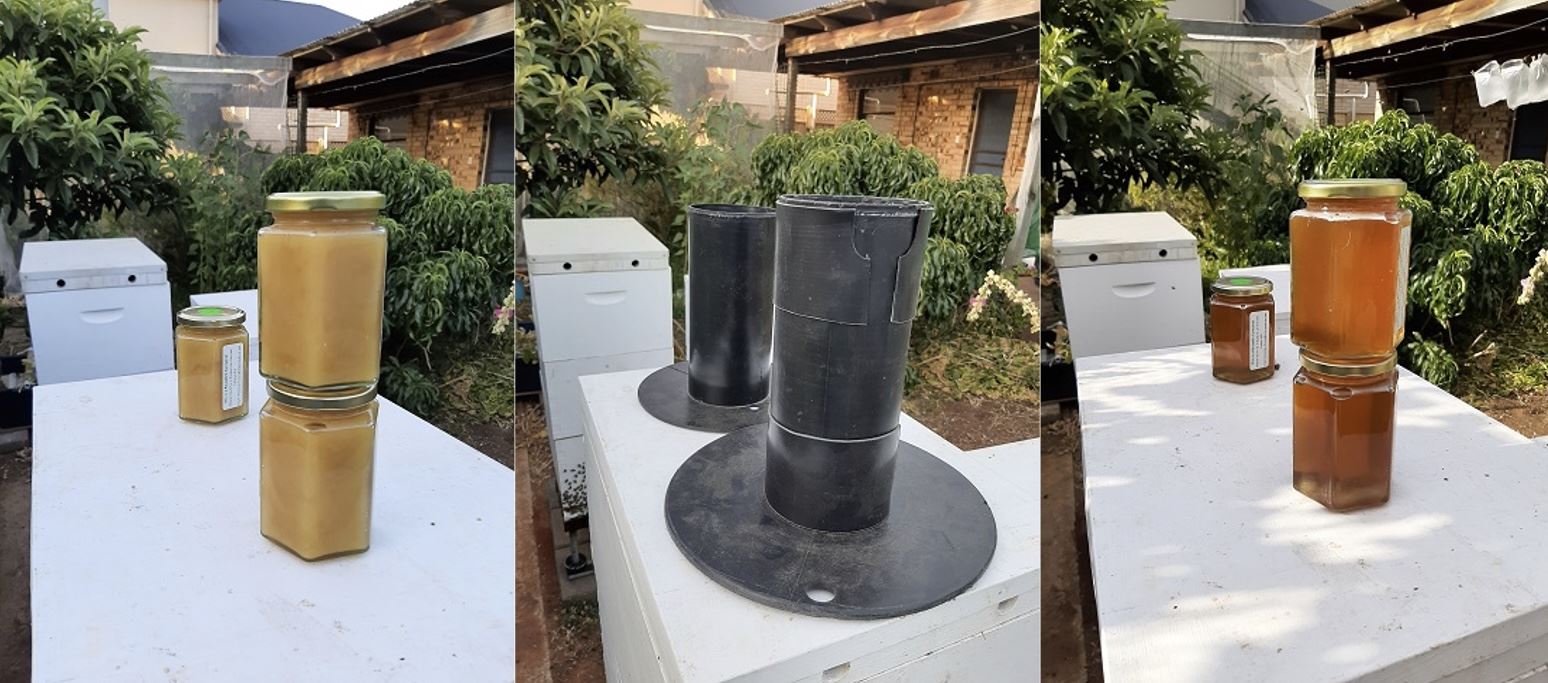The following is from an issue of our newsletter Buzzword, where one of our members, Trevor Greenfield lists some of his favourite beekeeping tips. We hope it gives you some ideas and inspiration! Watering Bees, Simple watererMade from kitty litter tray, hessian, paver offcuts and some poly pipe. Water topped up every second day.
Watering Bees, Larger watererThis started as a 45 litre plastic bin from Bunnings.
The centre rail is a piece of 20mm electrical conduit tied to the handles [holes in the bin handles for the cord]. This is located in slightly dappled shade which seems to work best, and keeps the water cool even in hot weather.
Modified hive toolI modify the normal Australian J-tool to give it a sharp hook point. I find that this allows me to insert the end of the tool into places that are very restrictive or tight. An example would be to lift out Flow Hive flow frames. These have tight tolerances that make it awkward to use the conventional hook. It’s also useful for cleaning out the groove when cleaning up wax foundation frames for re-use. No separate tool needed. I grind the shape out using an angle grinder fitted with a 1mm stainless steel cutting blade, then clean up the new shape with a curved file.
Hive stands with ant trapsThe photo on the left has stands made from school student desks. The one on the right is an adjustable stand for use with Flow Hives. Both have small ‘tuna’ tins under the legs so that the legs do not touch the edge of the tins. These tins hold engine oil (even used sump oil is OK). Ants won’t cross the oil barrier, and are most reluctant to cross even when the oil collects dust and a few bees. There are some losses of bees, but this doesn’t affect hive strength. Ants in the hive affect the hive to a greater extent than the small number of bees lost to the ant traps.
Hint 1: DO NOT use water. It dries out too quickly, and the ants resume their way into the hive.
Storing framesUse broccoli boxes from Fruit and Vegetable shops. These can store up to 8 unused full depth frames or 6 drawn full depth frames. Frames that have been frozen to kill wax moth can be stored without further refrigeration if they are transferred into the box cold and the box sealed with duct tape.
Smoker modifications
The smoker has a hook added to the front to allow it to be clipped onto the open hive box when working bees. This gives off a small amount of smoke across the box without any interaction. I’ve added a ‘stopper’ made out of a piece of tapered dowel. (It could be a piece of stick or a cut down cork). This is secured to the smoker with a light chain and a screw eyelet. When finished with the smoker the ‘stopper’ is pushed into the end of the smoker and the smouldering smoker material soon exhausts the available oxygen inside the smoker and the material goes out. This saves smoker fuel as any remaining can be mixed with fresh fuel and further used.
The use of a ‘stopper’ improves the safety of using a smoker in the warm dry conditions of summer and autumn. Hessian as smoker fuelI use hessian from bags as fuel and find that pre-preparing all my fuel saves a lot of frustration if you run low halfway through looking at bees. It also avoids the problem of damp fuel (as in pine needles or gum leaves). Bags are cut up across the bag width, following the weft on one side. I pull off one thread to use to tie up the bag section. Each bag segment is lightly rolled and tied up ready for use. Too tight and it fails to burn properly, too loose and it burns away too quickly (and too hot!). Each segment is about 2/3 to ¾ the length of the smoker barrel. This way, an additional segment can be stuffed in on top of the earlier, burning portion. Normally I break the securing thread before I use the fuel in the smoker.
Hint 1: If the bag is stitched together using synthetic thread unpick the bag and remove all thread. Bees object to fuels that have oils or synthetics in them. They burn with aromatics that agitate bees greatly.
Simple heater to re-liquify honeyEver had honey candy in the jar and you really would like it to be liquid? Most honey will naturally candy as the sugars in it form into small crystals. Honey can be re-liquified by warming it to around hive temperature or a bit more, definitely no more than 50 ᵒC though. Here’s an easy way to do this, and at no cost too. Place the jar inside an old electrical cable reel in a warm sunny spot. I use the top of my hives. The cable reel should have one end cut off (for stability and to remove any shadowing). Of course, this works best when the day is sunny and warm.
Shading for bees
These ‘shade lids’ are put in place when the weather is hot and removed when the heat moderates. The ‘rule of thumb’ I use ‘if the hot weather is for more than 2 days about 40 ᵒC maximum and the overnight minimum is above 20 ᵒC’ then deploy the shade lids. The rationale for this is hives normally run at 34 ᵒC so that an outside temperature of 38-40 ᵒC is only 4-6 ᵒC above normal. During the day bees collect water and evaporate it to cool the hive. However, bees use bearding as an overnight process to cool the hive and in particular the brood combs as they can’t collect water at night. If the overnight temperature remains high this bearding overnight becomes much less effective in cooling the hive for the next day. Extended hot weather where the overnight temperatures remain high stresses the bees in a cumulative manner, and the hive temperature continues to rise day-by-day despite the bees’ best effort.
|



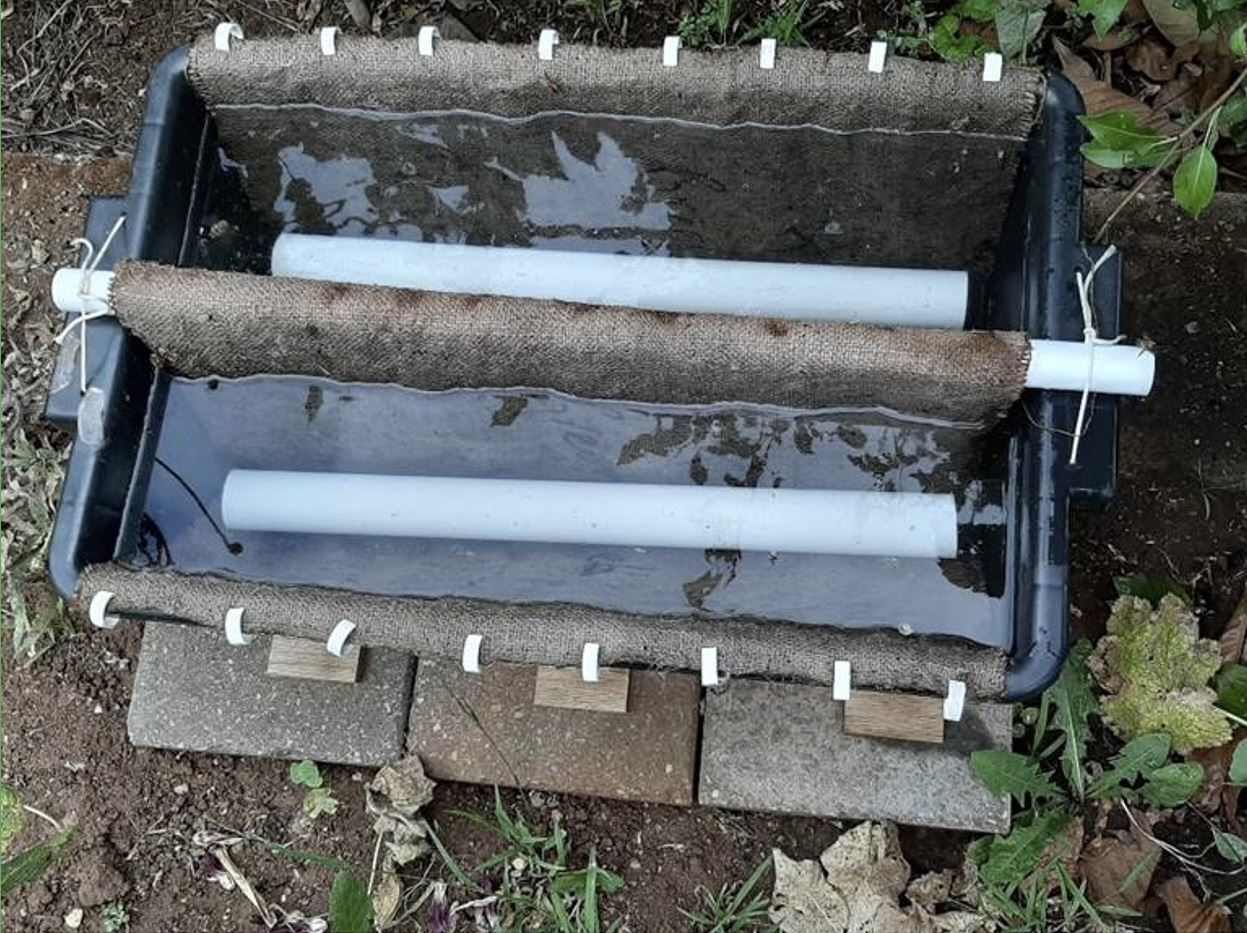
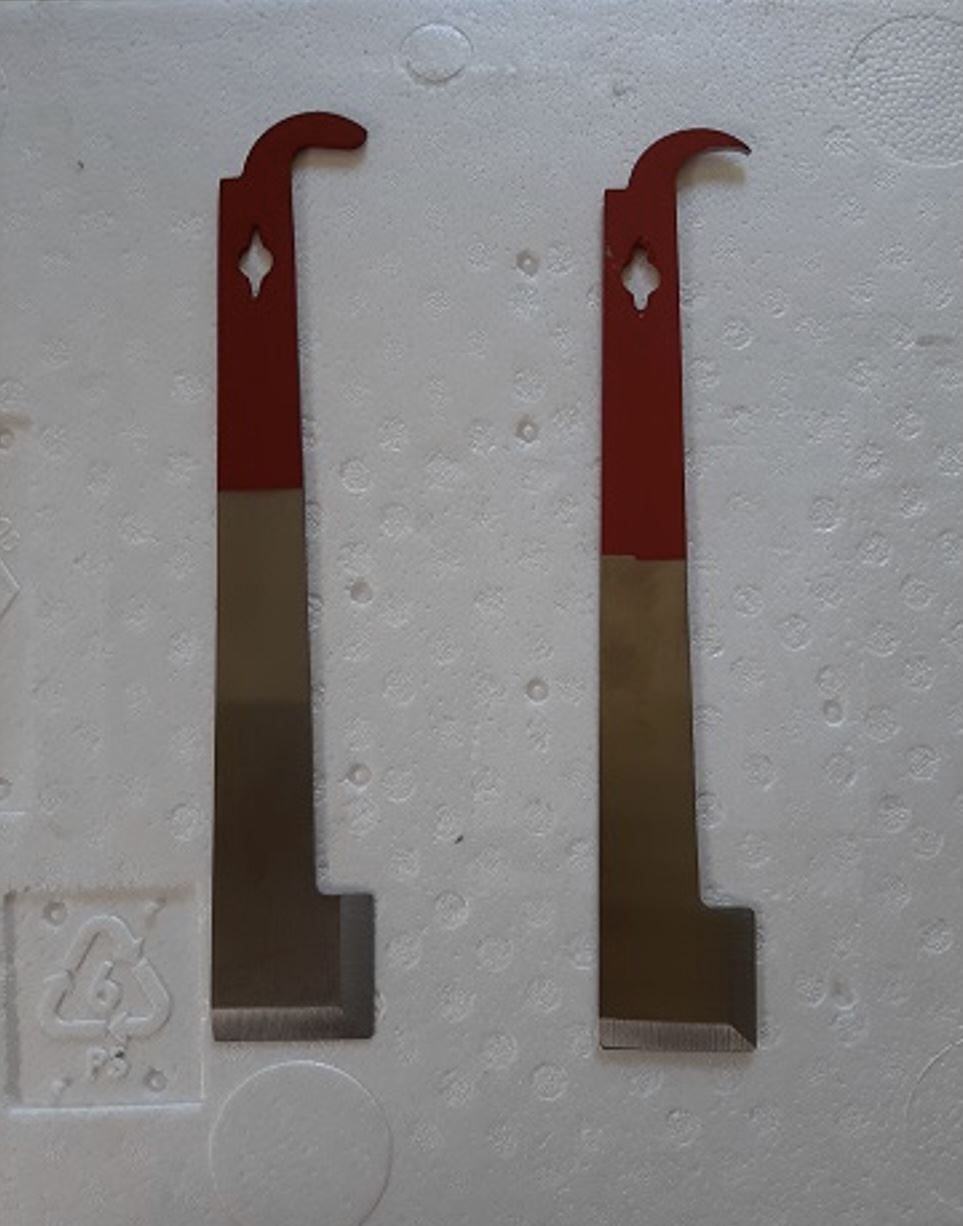

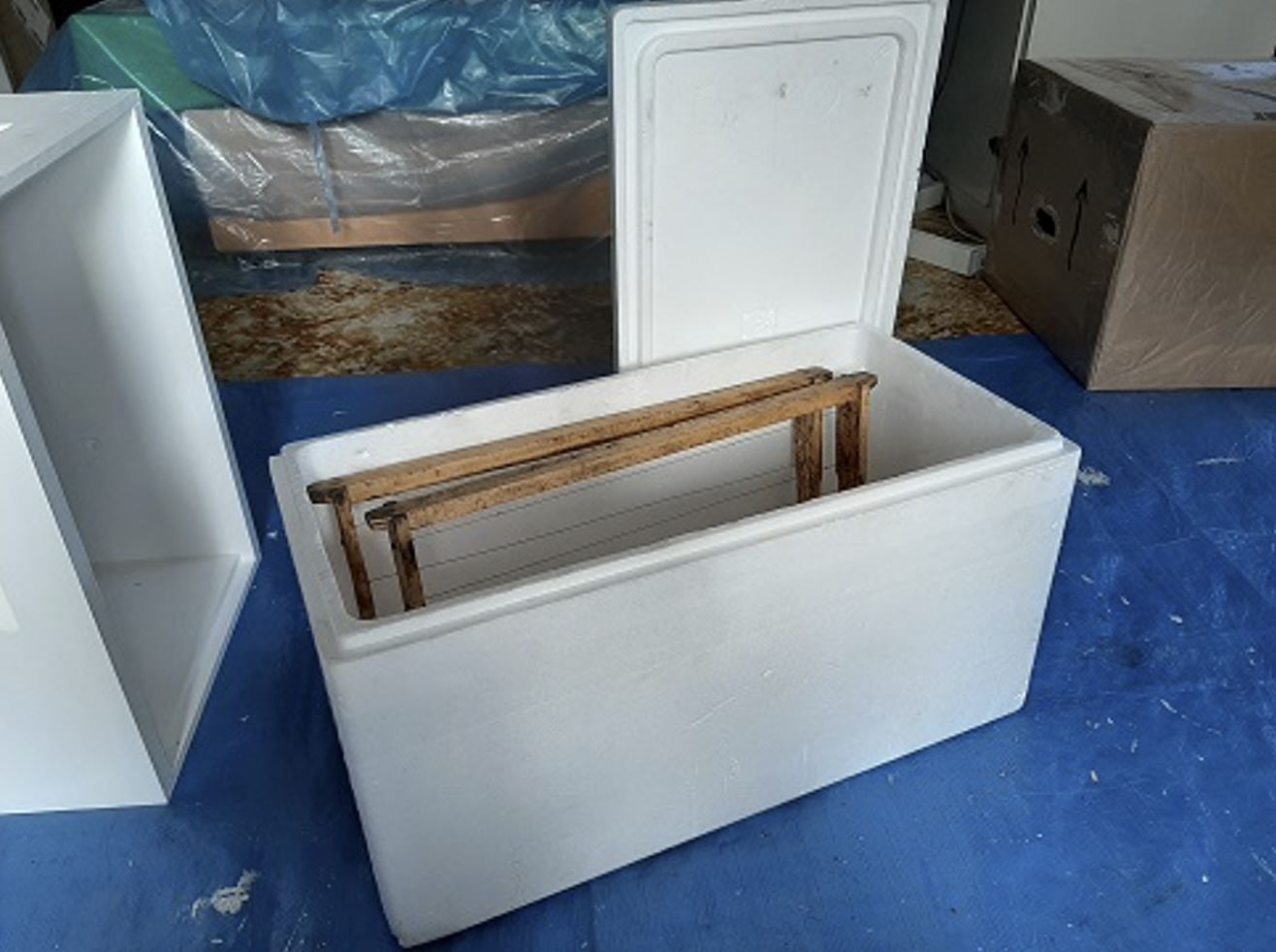
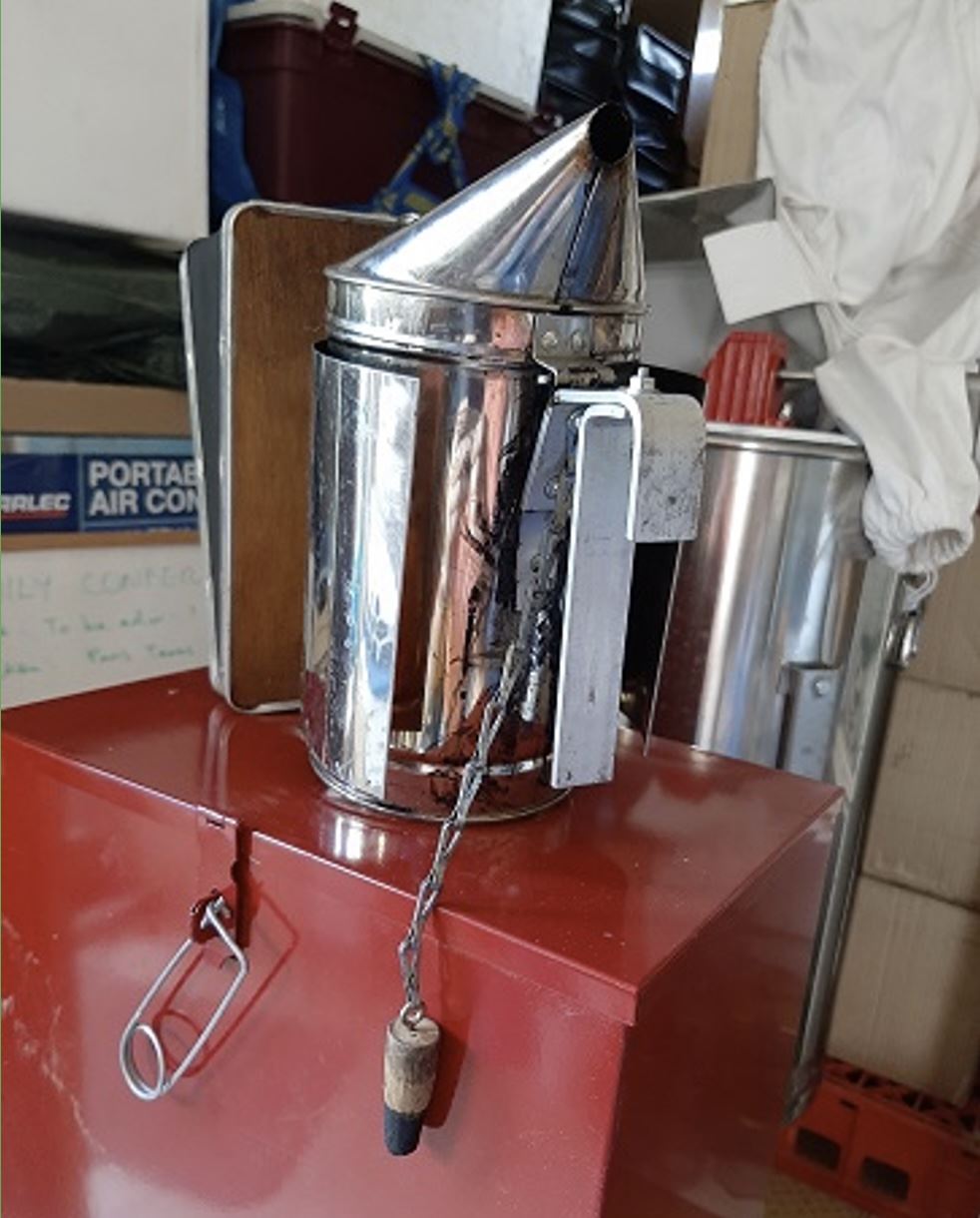 There are two modifications.
There are two modifications.
